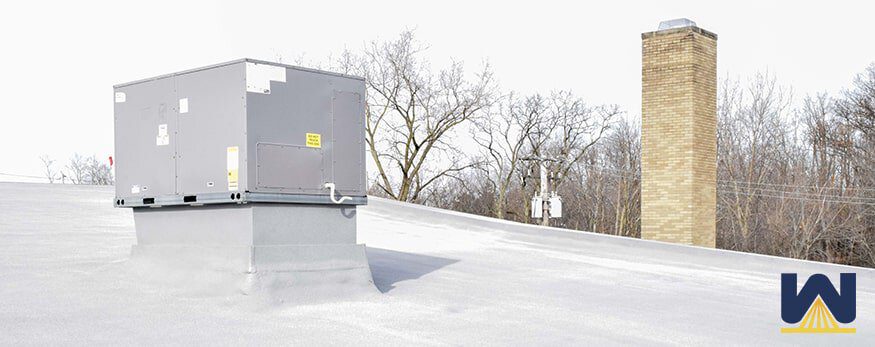You might ask, “How long does spray take to cure?”
The answer is a few hours.
The spray foam will be tack-free within 20-30 seconds, and it will rise to completion so that you can walk on it within a couple of minutes.
Spray foam has an off-gassing period of a few hours until it’s 100% cured.
Here’s a 15-second video of spray foam being sprayed and rising:
Now that we got “curing” out of the way, let’s begin with how spray foam is laid down.
In this article, you’ll learn:
- How spray foam gets installed
- What is “tack-free”?
- When can you walk on spray foam?
- How temperature affects the “curing” process
- The Three E’s (Electrical, Environmental, and Exothermic)
This article has been edited and approved for publishing by a spray foam roofing expert with more than 30 years of experience.
Let’s get started!
How does spray foam get installed?
Here’s a quick video that shows how a spray foam roofing system is installed from start to finish:
Spray foam is the reacted product of two components, an “A” side, and a “B” side, that are mixed and sprayed onto a roofing substrate.
In general, a spray foam roofing contractor must be capable of storing, pumping, heating, mixing, and spraying these two components at the material supplier’s recommended temperature, viscosity, and material ratio. (Spray Polyurethane Foam Alliance)
Once the foam is sprayed correctly, a curing process must occur before applying the coating.
NOTE: Coating MUST be applied to spray foam due to UV lighting, which degrades spray foam within 72 hours.
When will spray foam be “tack-free”?
After the foam is sprayed, the first step in the curing process is the point when spray foam is tack-free.
Tack-free is the time that the surface of the foam can be touched with a wooden stick without it sticking.
This usually takes 20-30 seconds.
After 20-30 seconds, spray foam will begin to develop its waterproofing skin and is very close to being walkable.
When can you walk on a spray foam roof?
Spray foam reacts quickly and evolves into a walkable surface within 1-2 minutes after it’s sprayed.
Can temperature affect curing? If it’s hotter, does it cure quicker?
Temperature affects how long spray foam takes to cure and how it is laid down.
For Spray foam to be laid down correctly, it needs three types of energy:
- Electrical – the equipment used in mixing/heating foam
- Environmental – the air temperature, deck temperature, sun, etc.
- Exothermic – the heat created from the chemical reaction when the A and B components meet
You need all three energies synced for the foam to be installed and to cure correctly. Here’s an example of how changing energies can affect a spray foam job:
Say it’s October, and you have a regular speed of foam that’s meant to be used in 65-90 degree ambient air temperature. Today it’s 60 degrees, so you’re at the bottom end of that speed of foam.
Two energies are lacking:
- Environment – the air temperature is below what’s recommended (not controllable)
- Exothermic – the chemical reaction will be too slow because the foam was meant to operate in 65-90 degree weather (controllable)
Solution: A roofing contractor will need to increase the amount of heat used in the equipment to mix the A and B sides. Also, you may need to order a faster-reacting foam to increase the exothermic energy.
The point is that the environment is never controllable. The other two can be controlled by adjusting equipment temperatures or using a faster or slower speed of foam.
You mentioned coating. How long does that take to cure?
It all depends on the weather. On a good, warm day, it could be tack-free in 15-20 minutes and walkable within an hour.
On a colder day without sun, the coating can take 3-4 hours to cure.
Conclusion
Hopefully, today you learned that spray foam cures 100% within a few hours. It can be walked on within a few minutes, but the “off-gassing” period can last a few hours.
We also hope you learned a little science today by learning the three energies needed for spray foam to be laid down correctly.
Other related articles:
- How much does a spray foam roof cost?
- What problems can spray foam roofs have?
- Which roofing system is best, Metal, Single-ply, Spray Foam, or Roof Coating Systems?


